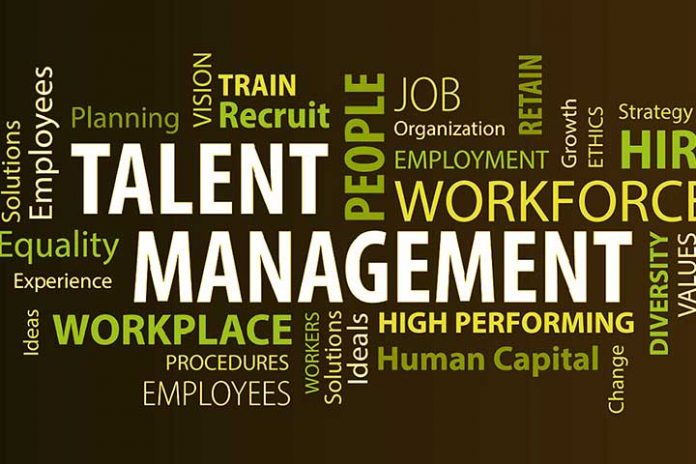With many organizations currently reviewing their budgets and plans, it is time for HR departments to rethink their talent management strategies in 2022.
Skills shortages, work-from-home strategies and the new world of work have meant that continuing the same old practices could leave teams in a troubled spot. The call for ‘business as usual’ could be a red flag for employees after the pandemic, as what many want is business as usual.
If our talent and HR strategy falls into bad habits, the organization can suffer, and with myths floating around, it can be even harder to tell right from wrong. If issues aren’t identified early, talent acquisition functions can fall into the trap of stalling in a pivotal year when most should be capitalizing on the learning curve of the last 12 months. To avoid the mistakes of years past, HR and talent management teams need to introduce best practices and move away from these five myths.
1. “Advertising will not attract talent”
In the world of talent management and acquisition, many things can change quickly. Whether it’s for a new prospect or to replace a moving employee lured by new pastures, talented professionals will inevitably need to recruit team members in the new year.
To do this, they must ensure that they can attract new and existing talent through innovative talent acquisition initiatives. One way is to consider advertising for visibility to attract passive and active prospects like Amazon, Cisco, FedEx, and competitors are using to bring talent to their doors.
As seen through Cisco’s ongoing ad campaign, the multinational tech conglomerate relies on brand endorsements from its employees. It is one of many proactive examples that SMBs can use today without straining many resources. Talent teams can use programmatic advertising and paid social media to reach a specific pool of candidates at a relatively low cost.
As a general rule of thumb, if it can work for large corporations, it can usually work for SMBs, and it’s a good idea to adapt or take advantage of advertising options.
2. “Everyone knows what we stand for”
If existing employees are unsure of the company values and the Employee Value Proposition (EVP) their employer offers, then new hires and candidates certainly won’t be. In a candidate-driven marketplace, companies must promote what they stand for to stand out and attract like-minded talent.
Assuming everyone knows your mission and values will limit the number of applications you receive, as talent is more likely to join an organization that makes its stance on issues apparent. Additionally, by clearly communicating these elements of your EVP, candidates who don’t align will gain a clear sense of company values and self-select out of the application process in the early stages, thereby saving time for HR and recruiting later on. . It is an exciting talent management formula.
With clear values and mission, only matching applicants will be accepted. By demonstrating company culture from the start, HR and talent teams can set the tone and manage the expectations of both existing team members and new hires.
3. “There is no need to leave”
Research shows that we are operating in a candidate-driven market today. With job openings surpassing customary records for the first time, a mass exodus of employees is already underway. With workers being offered significant wages and benefits to relocating, it’s only a matter of time until they start evaluating their options. If they’re considering a career change, an employee is likely first to approach their employers and ask for better terms of employment: more money, a bigger bonus, or perhaps more time off.
It is up to business and HR leaders to listen to these demands or risk higher turnover in the coming months. Let’s talk to our teams, establish areas for improvement within our culture or compensation, and tailor our EVP accordingly.
Employees and prospects want to feel supported, satisfied, and know that their career goals will be met, so think about talent management, training, benefits and emotional drivers to work for the company. Retaining talent should be a top priority for HR teams. If the inevitable happens, HR departments can use digitally-driven recruiting marketing and scalable recruiting resources to acquire new talent.
4. “Technology cannot solve all talent management problems”
If the past year has shown us anything, technology can be harnessed to improve efficiency, manage company resources and analyze employee performance more effectively. Any HR professional will know that technology can not only shorten processes but works hand in hand to increase efficiency with the right tools, software, and talent coming into the business.
However, when misused, technology can increase the workload and even exacerbate HR professionals’ pressure with the added responsibility of overseeing organizations. HR needs to make sure they understand how to use technologies effectively to support them if they want to see the real benefits.
Using AI tools without proper understanding can be dangerous for talent teams, can often lead to more bias than humans, and talent teams can never really understand how algorithms work. At a minimum, overuse of technology can lead to a lack of diversity and, subsequently, poor quality hiring.
It is important to remember that working together is critical and that technology cannot wholly replace the recruiter’s role in saving time, or the quality of the hire will suffer.
5. “It will be easier next year”
The uncertainty surrounding work culture continues to shape the industry, and every talented professional will need to adjust to the obstacles they will undoubtedly face.
Furthermore, the same skill sets continue to be in high demand, and the recruiting market in industries like technology and knowledge-based skills shows no signs of slowing down. We can’t expect talent acquisition to be any easier.
Even with these challenges, talent management professionals can and should use this to gain a foothold above the competition by staying as agile as possible and keeping an eye out for any changes or interruptions.
Also Read: Best Practices In Customs Management For Companies

